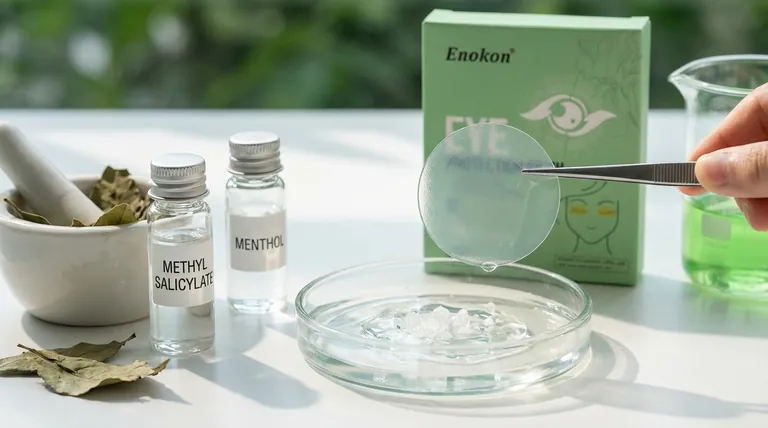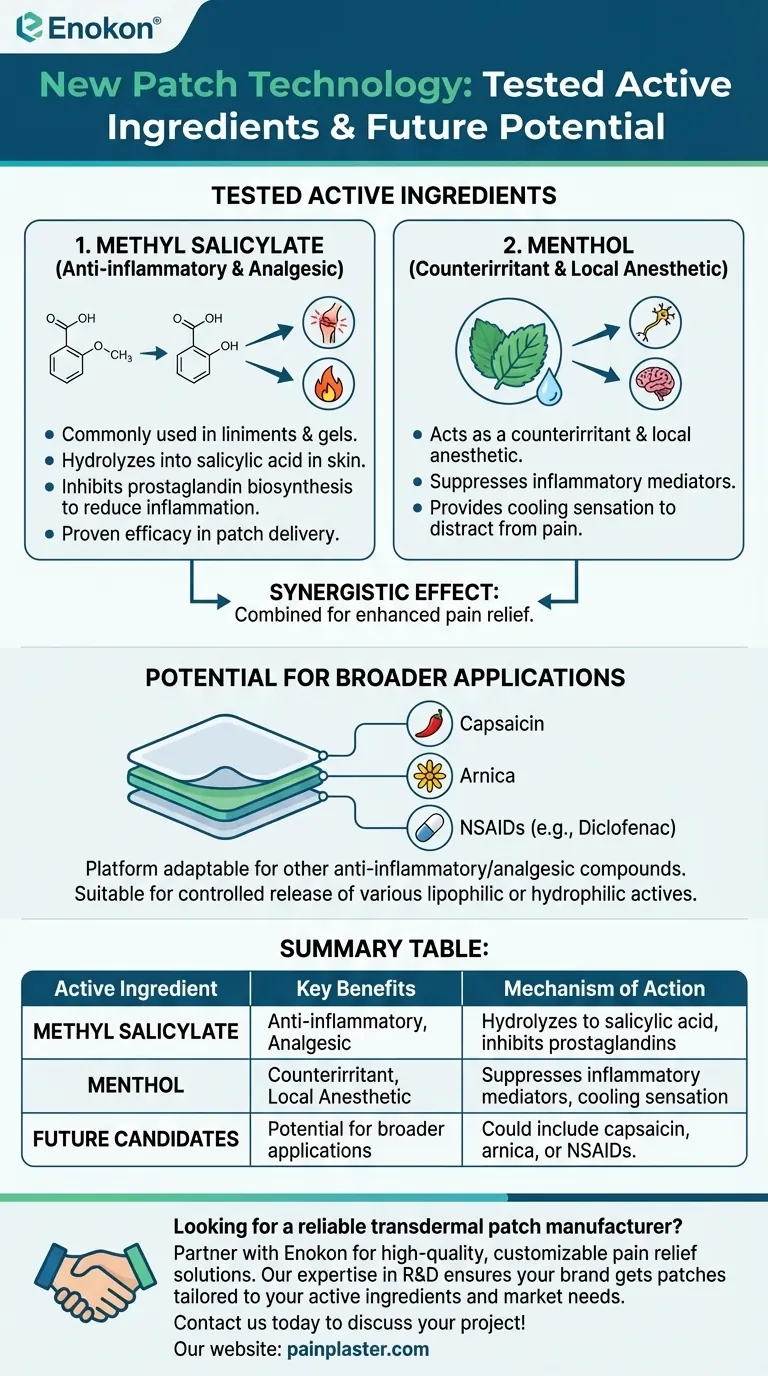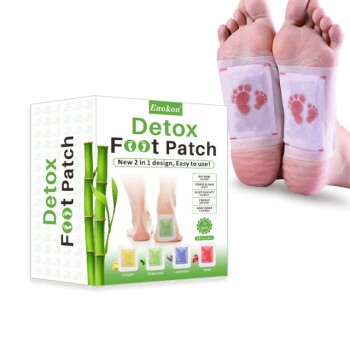The new patch technology has primarily been tested with active ingredients like methyl salicylate and menthol, both of which have shown successful results. Methyl salicylate, commonly used in liniments and gels, hydrolyzes into salicylic acid in the skin, offering anti-inflammatory and analgesic effects by inhibiting prostaglandin biosynthesis. Menthol acts as a counterirritant and local anesthetic, suppressing inflammatory mediators. These ingredients demonstrate the patch's versatility in delivering pain relief and anti-inflammatory benefits, suggesting potential for broader applications with other similar compounds.

Key Points Explained:
-
Methyl Salicylate as a Tested Active Ingredient
- Methyl salicylate is a well-known compound used in topical pain relief products like liniments and gels.
- When applied via the patch, it hydrolyzes into salicylic acid in the skin, mimicking salicylic acid's pharmacological effects.
- Key benefits include:
- Inhibition of prostaglandin biosynthesis, reducing inflammation.
- Proven efficacy in patch delivery, as seen in commercial applications.
-
Menthol's Role in the Patch Technology
- Menthol complements methyl salicylate by acting as a counterirritant and local anesthetic.
- Its mechanisms include:
- Suppressing inflammatory mediators, enhancing pain relief.
- Providing a cooling sensation that distracts from pain (counterirritant effect).
- This dual-action approach (methyl salicylate + menthol) highlights the patch's ability to combine multiple active ingredients for synergistic effects.
-
Potential for Broader Applications
- The success with methyl salicylate and menthol suggests the patch technology could accommodate other anti-inflammatory or analgesic compounds.
- For example, natural herbal patch ingredients like capsaicin or arnica might be viable candidates for future testing, given their similar topical use in pain management.
- The patch's design likely supports controlled release, making it suitable for a range of lipophilic or hydrophilic actives.
-
Clinical and Commercial Implications
- The patch's ability to deliver methyl salicylate effectively aligns with existing commercial products, easing regulatory pathways.
- Future research could explore:
- Combinations with other NSAIDs (e.g., diclofenac).
- Herbal extracts with proven topical efficacy.
- This adaptability positions the technology as a platform for diverse therapeutic needs.
By leveraging these insights, purchasers can anticipate the patch's scalability for other active ingredients, particularly those with established topical use profiles.
Summary Table:
| Active Ingredient | Key Benefits | Mechanism of Action |
|---|---|---|
| Methyl Salicylate | Anti-inflammatory, analgesic | Hydrolyzes into salicylic acid, inhibits prostaglandin biosynthesis |
| Menthol | Counterirritant, local anesthetic | Suppresses inflammatory mediators, provides cooling sensation |
| Future Candidates | Potential for broader applications | Could include capsaicin, arnica, or NSAIDs like diclofenac |
Looking for a reliable transdermal patch manufacturer? Partner with Enokon for high-quality, customizable pain relief solutions. Our expertise in R&D ensures your brand gets patches tailored to your active ingredients and market needs. Contact us today to discuss your project!
Visual Guide

Related Products
- Herbal Eye Protection Patch Eye Patch
- Mugwort Wormwood Pain Relief Patch for Neck Pain
- Capsaicin Chili Medicated Pain Relief Patches
- Icy Hot Menthol Medicine Pain Relief Patch
- Far Infrared Deep Heat Relief Patches Medicated Pain Relief Patches
People Also Ask
- How quickly can you see results from using under eye patches? Instant Brightening & Long-Term Benefits
- Should under eye patches be applied before or after moisturizer? Optimize Your Skincare Routine
- When should a doctor be consulted regarding the use of this patch? Key Safety Guidelines
- Can under eye patches smooth fine lines and wrinkles? Hydrate & Plump for Youthful Skin
- How do eye patches enhance the effectiveness of eye creams? Boost Your Eye Care Routine
















